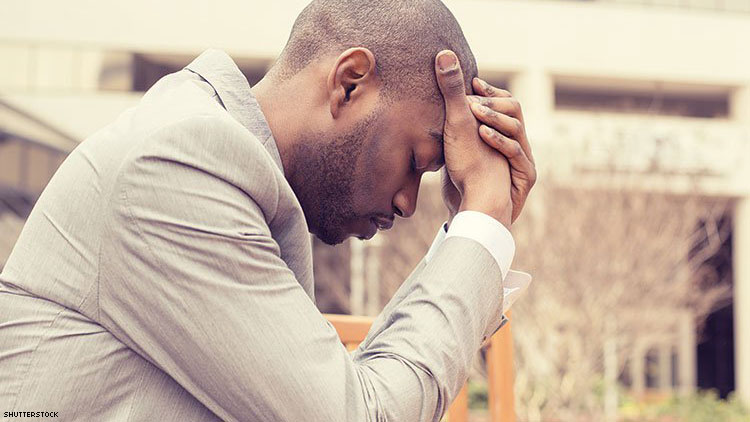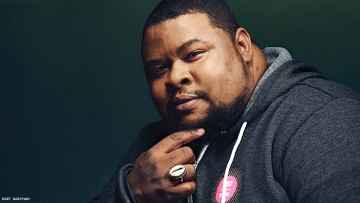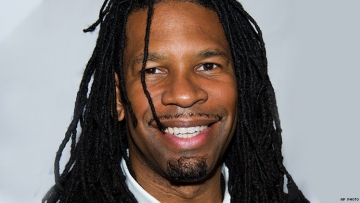Last February, the Centers for Disease Control and Prevention released a report predicting that, if things don’t change, one out of every two gay or bi black men will become HIV-positive in their lifetime. This statistic has been repeated endlessly, usually in connection with reasons why HIV rates are higher among African-American men who have sex with men. To be fair, there are a wide range of factors that play a part in raising HIV risks, including poverty, drug use, childhood sexual assault, and depression.
“We cannot separate the high infection rates among black gay men from several ills that continue to plague our society,” Greg Millet wrote for The Advocate in 2015. “Discrimination, poverty, stigma, and lack of access to health care all affect health care utilization for black gay men. As a result, a substantial proportion of black gay men remain undiagnosed, and others who are diagnosed and without the financial means to access medications will remain virally unsuppressed.”
Many of these factors also impact heterosexual black men, so what’s at the root of the disproportionate HIV rates for their queer brothers? One prevalent argument is that — because of excessive homophobia in the black community — black gay and bisexual men have low self-esteem. That lower self-esteem leads them to be more promiscuous, engage in riskier sexual behaviors, and even use drugs; which explains why HIV rates among black men who have sex with men is so high. Makes sense? Problem is, it’s also wrong.
The difficulty with this breakdown of causality is that it’s based on faulty premises, which many people — including leaders in the LGBT and HIV communities — keep sharing, over and over again.
“Contrary to what was presumed,” Millet wrote, “multiple studies have shown that black gay men are less likely to have condomless sex than white gay men and far less likely to use drugs like poppers or crystal methamphetamine during sex, which heighten the risk of HIV infection.”
“Greg Millett has done some really fascinating work about all these potential differences by race,” says Neal Goldstein, Ph.D., MBI, who has studied sexual behavior and the use of drugs among gay men, as well as HIV disparities. Goldstein is an infectious disease epidemiologist at Delaware’s Christiana Care Health System and he teaches at the Dornsife School of Public Health at Drexel University in Philadelphia.
“Do we see this increase in risk among black [men who have sex with men] compared to white MSM because they are more promiscuous?” Goldstein asks rhetorically. “No. In fact, based on the work by Millett’s group, you see that black MSM have even fewer partners than white MSM, so there is something else out there explaining the risk.”
Published in the Lancet, Millett’s 2012 meta-analysis of nearly 200 studies also found that black men who have sex with men were only as likely to have “serodiscordant unprotected sex” as other MSM. In other words, black gay and bi men were not more likely to have anal sex without a condom with someone they believed to be of a different HIV status.
A CDC study presented at the 2016 International AIDS Conference analyzed “sexual risk behaviors” among male high school students. Risk behaviors included having sex without a condom or having multiple sexual partners. The study, found “no significant differences” in the HIV-related risk behaviors of gay, bisexual, or heterosexual self-identified male youth.
Despite the fact that boys of all sexual orientations share similar HIV-related risk behaviors, the rate of HIV transmissions is much higher among young men who have sex with men. In 2014, for example, gay and bisexual males represented 80 percent of new youth infections.
The reason straight boys have lower risks of HIV? Although the study didn’t include different sexual positions as risk factors, Dr. Laura Kann, chief of CDC’s School-Based Surveillance Branch, speculated afterward that “the transmission risk for receptive anal sex is 17 times higher than [for] vaginal sex.” Teen boys who are only having insertive sex with their partners (be they male or female) have a significantly lower risk than boys who are on the receiving end of anal sex. (The same can be projected for transgender women and girls who have sex with gay or bi men.)
So, if studies have shown that African-American gay and bi men don’t engage in riskier sexual behavior what is to blame? Smaller social circles. Millet argues that because HIV rates are higher among black men, gay and bi black men are more likely to date someone who is HIV-positive. He points to a study that “found that white gay men in Atlanta needed to meet seven sex partners to have a 50 percent probability of meeting an HIV-positive partner, whereas black gay men needed only 3.5 sex partners.”
Goldstein agrees, explaining that the “social sexual networks” of black gay and bisexual men are likely to blame.















READER COMMENTS (